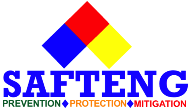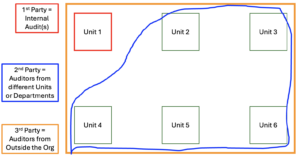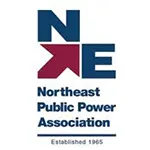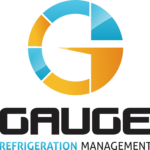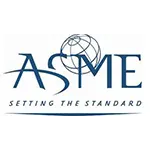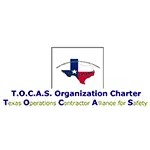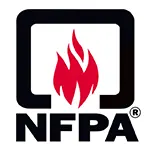Let us help you make sense of PSM / RMP!
My friend Brian Chapin will be offering an open-enrollment PSM/RMP class in Burleson, Texas, July 8th to 11th, 2025. Brian is an absolute pro in NH3 Refrigeration Process Safety. Anyone who attends will also get a FREE membership to SAFTENG. You can get more information on the class with this link.
CLICK HERE to Renew your Membership
CLICK HERE for a NEW Membership
CLICK HERE to see eligibility requirements for FREE Membership
If you have any questions, please contact m
SAFTENG has:
- Over 18,000 categorized unsafe acts/conditions and accident/injury photos
- Over 1,500 ppt's & doc's in the SAFTENG Library
- Over 4,000 Technical Articles on Process Safety, Emergency Response & OSH topics
- Over 450 videos (those not allowed on YouTube Channel)
Many THANKS to my NEW Members and those who CONTINUE to support SAFTENG:









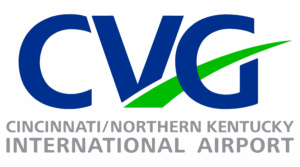




April 30, 2024
High-hazard Group H occupancy includes, among other things, the use of a building or structure, or a portion thereof, that involves the manufacturing, processing, generation, or storage of materials that constitute a physical or health hazard. Hazardous occupancies are classified in Groups H-1, H-2, H-3, H-4 and H-5. High-hazard Group H-1 buildings and structures that contain materials that pose a...
Read More
April 29, 2024
Much like it is in process safety, the Management of Change (MOC) tool may be the most despised element of an SMS. However, a recent safety assessment with a local client identified the lack of performing an MOC on significant changes to production machinery and rates. The facility is NOT a PSM facility, but they are ISO45001 “certified.” Last year, the facility had four...
Read More
April 29, 2024
Understanding the basics of the ABC model is a MUST for safety professionals, even if your organization is not ready for a formal Behavior Based Safety Process (BBSP). This simple model will enlighten many and help them understand WHY workers and management do what they do. Seasoned safety pros will often focus far too much on the Behaviors and Consequences when, in fact, it is the Activators...
Read More
April 29, 2024
The words “audits” and “inspections” often get used as if they are the same thing – THEY ARE NOT the same. I always like to say we inspect “things,” and we audit those inspections. Much like my previous post earlier this month, explaining the difference between “examinations” and “inspections” as used in ASME B31 series; the terms...
Read More
April 29, 2024
One of the more critical elements of an SMS is “auditing.” In the Plan-Do-Check-Act model, auditing falls within the “CHECK” function. I like to say it’s the element that keeps us honest and informed. And with that in mind, I break down my audits into three (3) layers: → 1st Party → 2nd Party → 3rd Party Each type of audit has its pros and cons, and the...
Read More
April 28, 2024
In the old days, the secondary containment around flammable liquid storage tanks could be a single system in which all the storage tanks sat. Today, that is NOT the case. Both NPFA 30 and IFC Chapter 57 require the secondary containment to be such that an LOPC from one tank can NOT impact the other tanks around it. They use the word “subdivided” to specify this. (emphasis by me) …...
Read More
April 28, 2024
If your team is focused on an event’s probability or likelihood, you’re NOT doing SIF! The Serious Injuries and Fatalities (SIF) model is intended to IDENTIFY events that have opportunities to cause life-altering injuries and death. And yes, most of these will (hopefully) have LOW frequencies/probabilities. So, to justify NOT responding to these LOW frequency – HIGH severity events...
Read More
April 28, 2024
The purpose of barrier[/controls/safeguards] management is to make the kind of implicit controls explicit: to be clear about exactly what controls are relied on to prevent incidents, to understand their characteristics, to have an understanding of how reliable they can be expected to be, and to know what needs to be done to ensure the controls are implemented and continue to function throughout...
Read More
April 26, 2024
Eight people, including five (5) contract workers and three (3) fire service personnel, were admitted to the hospital after they inhaled chlorine gas following a leakage at a water treatment plant.
…
HomeRead More »
Read More
April 25, 2024
Respondent operated a facility (the “Facility”) to manufacture chlorine, bleach, and hydrochloric acid. Respondent produced, used, or stored more than 2,500 pounds of chlorine at the Facility and was subject to the requirements of CAA § 112(r)(7). Respondent produced, used, or stored hydrogen at the Facility and was subject to the requirements of CAA § 112(r)(1). Respondent was subject to Program 3...
Read More
April 25, 2024
In terms of Fire and Building Codes, we have five (5) recognized areas associated with handling hazardous materials. We refer to these high-hazard areas/occupancies as “Group H”. High-hazard Group H occupancy includes, among others, the use of a building or structure, or a portion thereof, that involves the manufacturing, processing, generation or storage of materials that constitute...
Read More
April 24, 2024
During a recent design review, we encountered some questionable “normal breathing” designs. I have always used the simplest of tests to ensure the tank has ADEQUATE venting during filling and emptying. Although OSHA allows the designer to use API 2000 (1968) or “other accepted standards,” the simplest test is that the VENTING capability MUST be as large as the filling or withdrawal...
Read More
